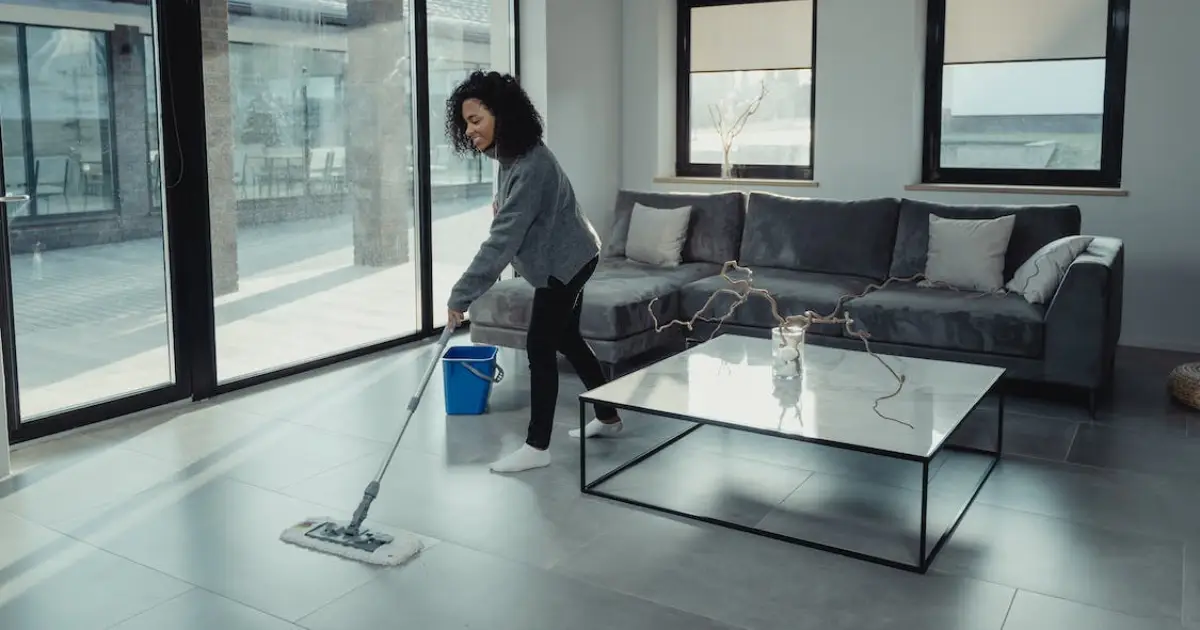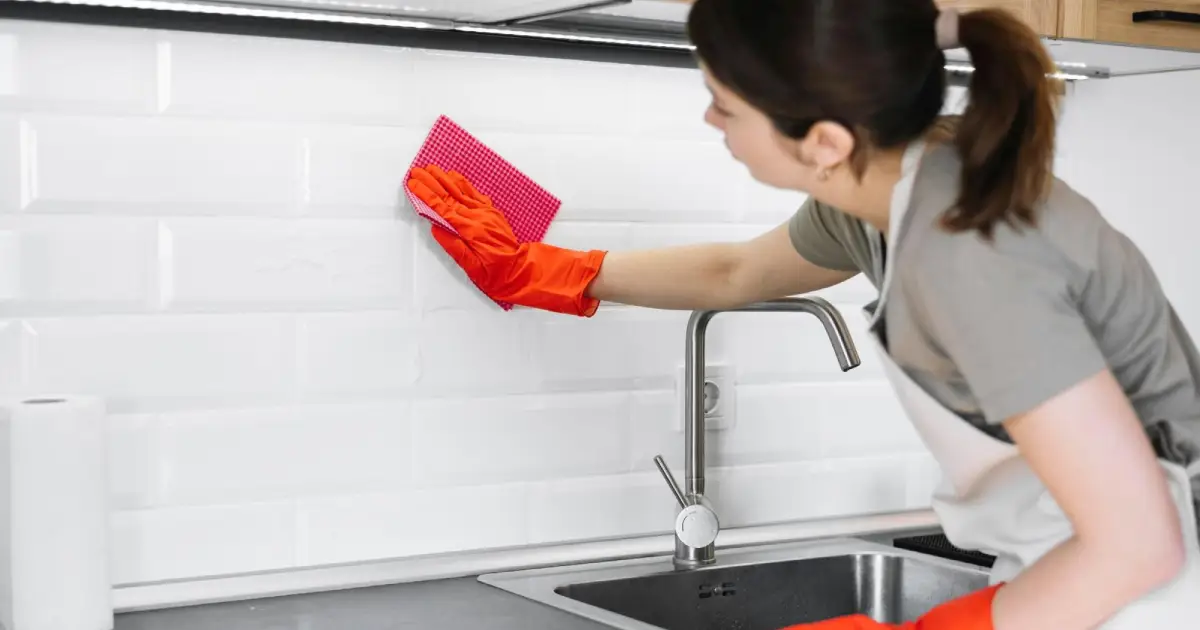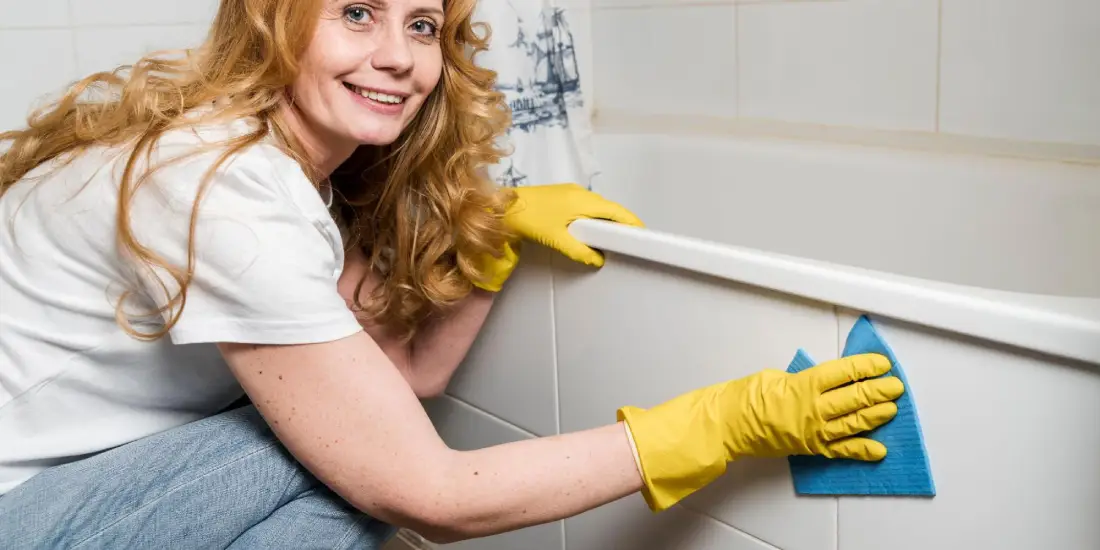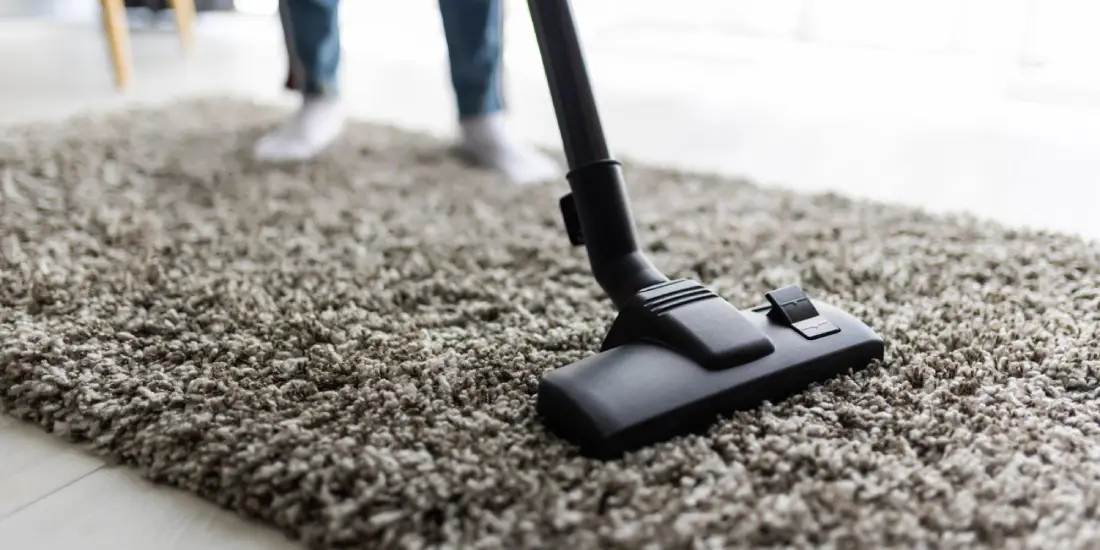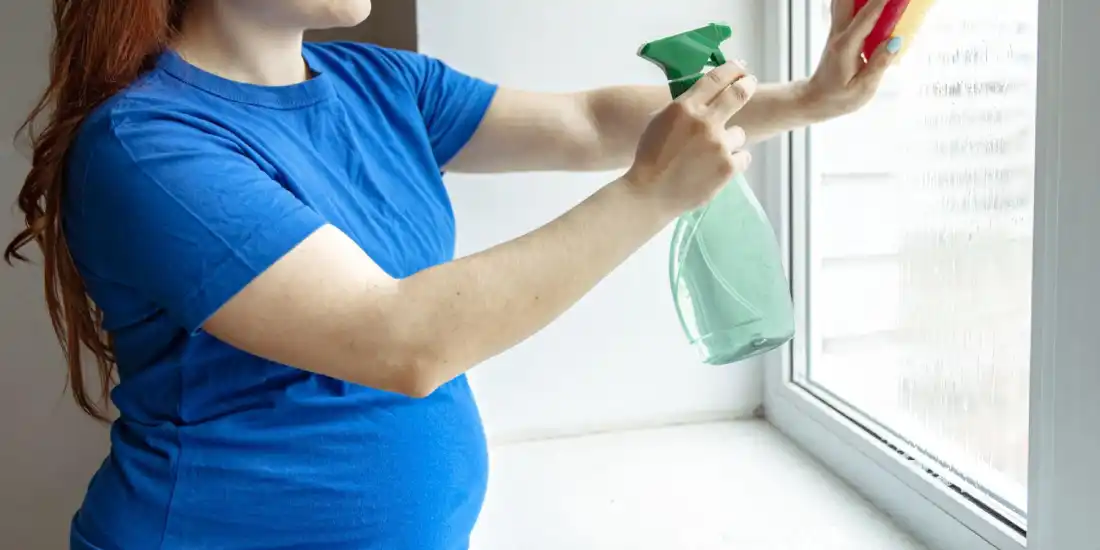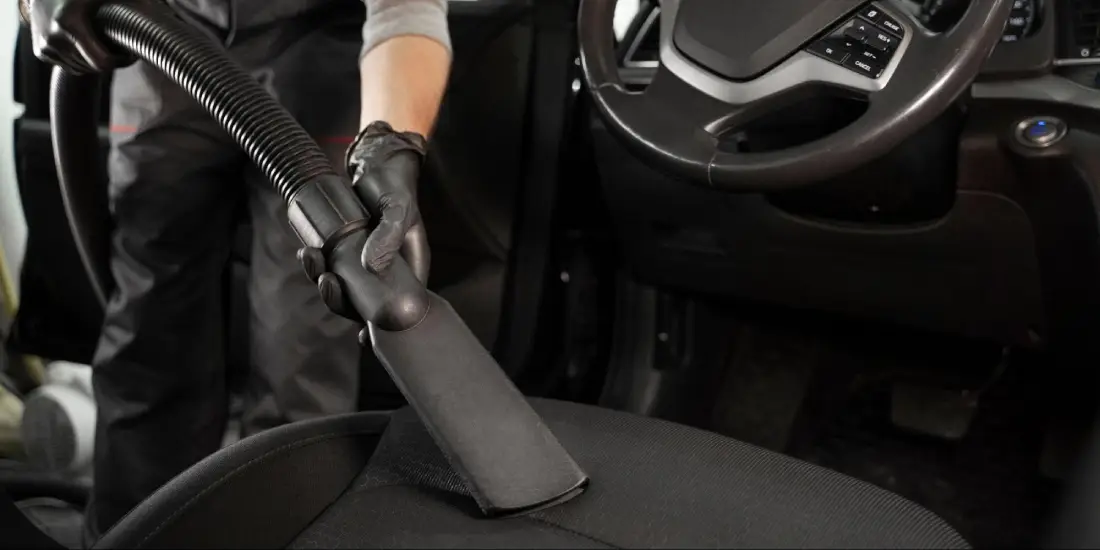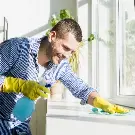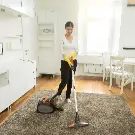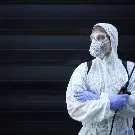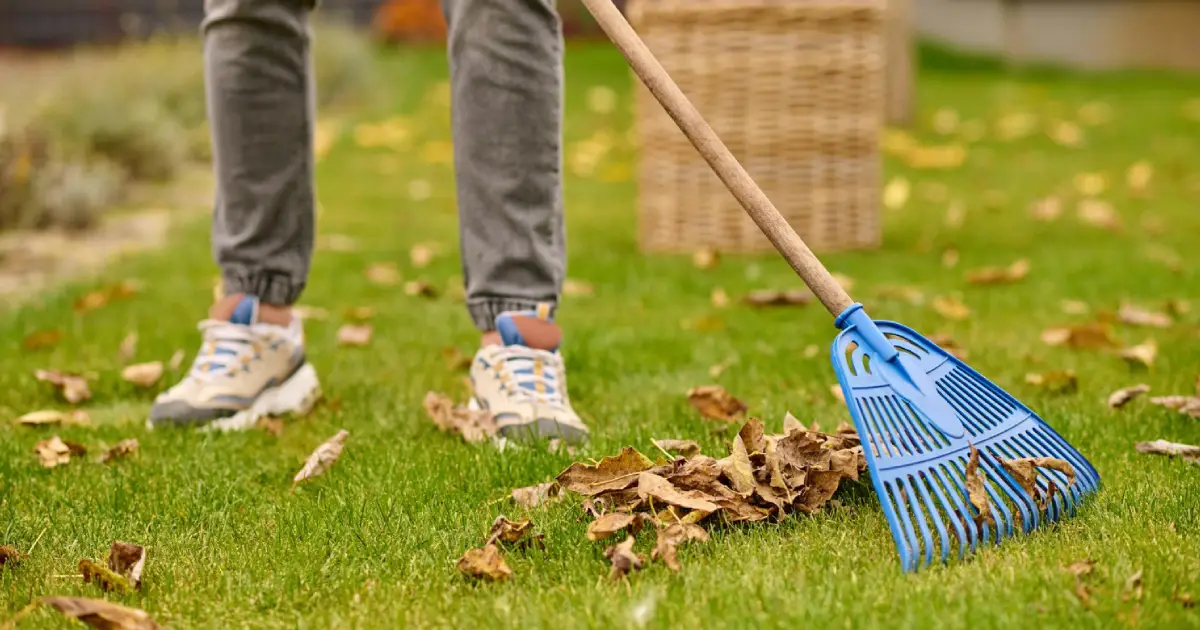
Winter is a lovely time of year, but it also presents a few challenges for maintaining and cleaning outdoor areas. Your outdoor spaces could be impacted by the effects of cold weather, snow, and ice, so it is important to plan ahead and carry out winter cleaning to keep them functional, safe, and visually pleasant. One of the most important components of seasonal upkeep is winter cleaning for outdoor areas. Following a set of simple but effective instructions and prepping your outdoor spaces will help you protect your home from the harsh winter weather and guarantee a fun and safe outside experience throughout the winter months. Clearing debris, preparing and storing outside furniture and equipment, treating hard surfaces, maintaining gutters, pruning and protecting plants, removing snow and ice, and winterizing water features are some of the tasks involved in this process.
It is essential to plan and carry out a complete winter cleaning schedule if you want to guarantee the safety, functionality, and visual appeal of your property throughout the winter season. This comprehensive guide will provide you with all the information you need for winter cleaning, enabling you to safeguard your home and confidently welcome the chilly months. Investing in professional house cleaning services can make sense if you have a large home or limited time and resources. They can tackle a variety of winter cleaning duties effectively since they have the knowledge, tools, and experience necessary, to ensure that your outside spaces stay in top shape all season.
Benefits Of Maintaining Clean And Organized Outdoor Areas
The importance of keeping outdoor spaces tidy and orderly extends beyond aesthetic considerations. It provides an array of advantages that boost your physical and mental health. It gives people a place where they can enjoy themselves while participating in outdoor activities, encourages rest and stress relief, boosts property value, improves air quality, encourages a connection with nature, and generates a sense of pride and accomplishment. Your outdoor areas will support a healthier and more meaningful lifestyle if you put some time and effort into keeping them clean and organized. The following are some of the main benefits of maintaining order and cleanliness in your outside areas:
Increased Property Value
An important asset that can considerably raise the value of your property is a well-kept outside space. When looking for a new home, potential buyers are frequently drawn to homes with enticing outside spaces that function effectively and need little maintenance. You could potentially be able to get a better return on investment when it comes time to sell your house by devoting time and effort to the upkeep of your outdoor spaces.
Preservation and Durability
Maintaining and improving the longevity of your property requires regular cleaning and organisation of outside areas. Regular upkeep efficiently stops the buildup of dirt, filth, and corrosive materials that can harm various surfaces, buildings, and outdoor furniture. You could significantly boost the longevity of your possessions and reduce the need for costly replacements by taking good care of your outside spaces and making sure they are organized properly.
Functionality
Outdoor spaces that are well-kept and arranged are more functional and accessible. When your outside areas are clean and well-kept, they offer plenty of space for a range of activities, like hosting gatherings, playing with children, or pursuing hobbies. Furniture and equipment can be easily used whenever necessary by making sure they are properly stored and maintained. Additionally, well-maintained driveways and paths make it easier to navigate around your property and enjoy and utilize your outside spaces.
Safety
A safe outdoor setting can be guaranteed through routine cleaning and organizing, which help to remove risks. Debris removal lowers the chance of falls, trips, and slides due to things like stray branches and leaves. During the winter, accidents can be avoided by clearing snow, ice, and other obstructions from driveways, steps, and walkways. Injury risks from tripping or falling objects are decreased by properly storing tools, equipment, and outdoor toys.
Aesthetics
The overall look and aesthetics of your property are greatly enhanced by neat exterior areas. When your outside spaces are kept tidy, with tastefully placed furniture, well-maintained vegetation, and clean walkways, they produce a striking setting in which you can take pride. This focus on organization and cleanliness improves the curb appeal of your home, leaving a good first impression on visitors, neighbours, and even potential purchasers. An aesthetically pleasing outside area raises the overall appeal and value of your property and fosters a warm ambience that showcases your attention to detail and care.
Cleaning Your Outdoor Spaces
Maintaining the aesthetic, functionality, and safety of your home requires you to regularly clean your outside areas. You can keep your outdoor spaces in top condition, extend their lifespan, and create a comfortable space for you, your family, and your guests to enjoy by implementing regular cleaning and maintenance procedures. Here are some crucial actions to take into account when cleaning your outdoor spaces. You can maintain the look, use, and safety of your property by adhering to these essential procedures and implementing routine cleaning and maintenance into your outdoor routine. These efforts will produce an attractive outdoor setting that you can take advantage of all year long.
Clearing Debris and Leaves
Clearing debris and leaves from outdoor spaces involves raking and removing fallen leaves, clearing debris from lawns, gardens, and pathways, and properly disposing of or composting organic waste. Using tools like rakes and brooms, you can gather leaves into piles and transfer them to bags or bins for disposal or composting. Additionally, identifying and removing other debris such as branches or clutter ensures a clean and safe outdoor environment. Proper disposal methods, such as curbside collection or composting, should be followed following local guidelines. By effectively clearing debris and leaves, you can maintain a neat and organized outdoor space.
Storing Outdoor Furniture
Cleaning and storing outdoor furniture involves cleaning and wiping down the surfaces, treating and protecting wooden furniture, washing and storing cushions or upholstery, and storing the furniture in a dry and sheltered area. The process includes removing cushions and accessories, dusting off debris, washing with mild detergent, rinsing, and drying the furniture. For wooden furniture, sanding and applying wood sealant or oil helps protect it. Cushions or upholstery should be spot cleaned and fully dried before storage. A further degree of security can be added by covering or wrapping the furniture and selecting an appropriate storage location. You can keep your outdoor furniture clean, attractive, and long-lasting by adhering to these instructions.
Cleaning and Maintaining Outdoor Structures
To keep your outdoor structures in optimal condition, regular cleaning and maintenance are essential. Begin by thoroughly cleaning and inspecting your patios, decks, and fences, removing debris and dirt. Sweeping or pressure washing hard surfaces can effectively eliminate stains and grime. If there are any damaged areas, promptly repair them to ensure safety and aesthetics. Applying sealant or protective coatings, especially for wooden structures, helps safeguard against moisture and UV damage. By following these steps, you can extend the lifespan of your outdoor structures while keeping them looking their best.
Winterizing Garden and Plant Beds
Winterizing garden and plant beds involves trimming and pruning plants, clearing out dead vegetation and weeds, mulching to protect plants from the cold, and covering delicate plants with frost blankets or cloths. This process helps safeguard your plants during the winter months. Trimming and pruning remove dead or diseased branches while clearing out dead vegetation and weeds prevents disease and decay. Mulching provides insulation, regulates temperature, and retains moisture in the soil. Covering delicate plants with frost blankets or cloths offers an extra layer of protection against freezing temperatures. By following these steps, you can prepare your garden and plant beds for winter, ensuring the health and survival of your plants until spring arrives.
Cleaning and Maintaining Outdoor Lighting
Cleaning and maintaining outdoor lighting involves checking and replacing bulbs, cleaning fixtures and removing debris, repairing or repositioning fixtures, and ensuring proper electrical connections and safety measures. Regular inspection and replacement of bulbs, along with cleaning the fixtures and removing debris, help maintain optimal lighting performance and appearance. Repairing damaged parts and repositioning fixtures as needed ensure proper functionality and desired lighting effects. It is important to check wiring connections, weatherproofing, and test safety features to ensure the safety and longevity of the outdoor lighting system. By following these steps, you can keep your outdoor lighting in good condition, providing both functionality and aesthetic appeal to your outdoor spaces.
Clearing Gutters and Downspouts
Clearing gutters and downspouts involves removing leaves and debris from gutters, flushing downspouts to ensure proper water flow, and repairing or replacing damaged gutter sections. By manually removing debris and disposing of it properly, you can prevent clogs and ensure effective water drainage. Flushing downspouts with a garden hose helps clear any remaining debris and maintains unobstructed water flow. Inspecting gutters for damage and addressing issues such as leaks or sagging sections through repairs or replacements ensures the proper functioning of the gutter system. Regular maintenance of gutters and downspouts helps protect your property from water damage and ensures efficient drainage during rainfall.
Safety Precautions
When performing outdoor cleaning tasks, safety should always come first. When undertaking outdoor cleaning jobs, always make sure that your safety and the safety of others are taken care of. You can mitigate the possibility of accidents and injuries by adhering to these safety rules, which will help you and others around you feel safe and have a productive cleaning process. The following are some safety measures that must be ensured at any cost:
Use Appropriate Protective Gear
Wearing the proper safety equipment is essential when performing outdoor cleaning jobs to reduce the chance of accidents and exposure to dangerous materials. Always remember to choose the proper safety equipment based on the particular risks related to outdoor cleaning work. To keep your protective equipment functioning properly, regularly inspect and make timely repairs. It is much less likely that someone will get hurt or be exposed to toxic materials when protective equipment is worn and used properly, which encourages a safer cleaning environment. Here are some specific kinds of protective gear to take into account:
- Select gloves that provide grip and protection against chemicals, rough surfaces, and sharp items. Choose the right type of gloves made for the cleaning operation to avoid cuts, abrasions, or chemical contact.
- Wearing goggles will protect your eyes from dirt, dust, and splattering cleaning agents. They shield the eyes and prevent eye damage.
- When cleaning areas where there is dust, mold, or potentially toxic chemicals, use a mask. By preventing the inhalation of particles or fumes, masks safeguard your respiratory system.
Be Mindful of Slippery Surfaces and Potential Hazards
In order to reduce the danger of accidents, it is important to pay close attention to any potential hazards when cleaning outdoors. You can reduce the possibility of accidents and create a safer environment for outdoor cleaning by putting some simple safety measures into action. Throughout the cleaning process, remain vigilant and aware of your surroundings, and take the appropriate precautions to handle any possible dangers. Here are some additional safety measures to think about:
- Watch out for areas that have ice, damp or moss-covered surfaces. Use salt, sand, or ice melt to increase traction.
- To maintain safety, clear all walkways, steps, and entrances of snow, ice, leaves, or other debris.
- Check the cleaning area for exposed roots, unsecured cables, and uneven ground. Before beginning the cleaning process, address risks that may exist.
Follow Safety Guidelines
Using power tools or working at heights will undoubtedly increase the risks associated with outdoor cleaning tasks. It is of the utmost importance to put safety first and follow the right procedures to protect yourself as well as others around you. Properly following safety regulations ensures your safety and prevents accidents or injuries by reducing the dangers involved with working at heights, using power tools, or doing outdoor cleaning tasks. To successfully complete your outdoor cleaning duties following precautions should always come first.
- When operating at heights, use a sturdy ladder placed on level ground. Maintain at least three points of contact while ascending, inspect it for damage, and obey weight restrictions.
- When using power tools or working at heights, secure your tools and equipment correctly to prevent mishaps. Use lanyards, tool belts, or other safety measures to prevent falling or dropped objects.
- Put safety first by reading and understanding the manufacturer's instructions before using any power tools. Wear essential safety equipment, such as gloves, earplugs, and goggles. Power sources should be turned off before doing maintenance or repairs.
Seek Professional Help
Seeking professional help for tasks involving significant height, complex power tools, or unfamiliar equipment is crucial to ensure safety and efficiency. Professional cleaners bring expertise, experience, and specialized tools to the table, ensuring that the job is completed in compliance with safety guidelines and local codes. They have the necessary safety gear, knowledge of protocols, and liability insurance, providing peace of mind and protecting you from potential risks and financial liabilities. Hiring professionals can save time and effort while delivering precise results, allowing you to focus on other responsibilities. Overall, professional assistance guarantees a safe and successful outcome for your outdoor cleaning tasks.
Conclusion
There are a few crucial procedures that must be taken in order to prepare outdoor areas. Start by removing trash and leaves, making sure that lawns, gardens, and walkways are clutter-free. Dispose of organic waste properly. Next, concentrate on maintaining and storing outdoor furniture by washing and storing cushions or upholstery, treating and protecting hardwood furniture, cleaning surfaces, and positioning furniture in a dry, protected spot. Preparing plant and garden beds for winter also entails pruning and trimming plants, eliminating weeds and dead vegetation, mulching to protect against the cold, and protecting sensitive plants with frost blankets or cloths. Finally, check and replace bulbs, clean fixtures, fix or move lighting fixtures, and make sure that adequate electrical connections and safety precautions are in place to clean and maintain outdoor lighting.
Winter maintenance of outside areas plays an important role in keeping a clean, secure, and well-maintained property. You can efficiently prepare yourself for the colder months by using the winter cleaning advice provided in this article. Remember to use the proper safety equipment, pay attention to slick areas and potential dangers, and abide by the rules about working at heights or using power tools. You will have a cleaner, safer, and more beautiful outdoor environment by making the time and effort to clean it up over the winter. A well-kept exterior not only improves the curb appeal of your house but also creates a comfortable setting for parties and outdoor activities.
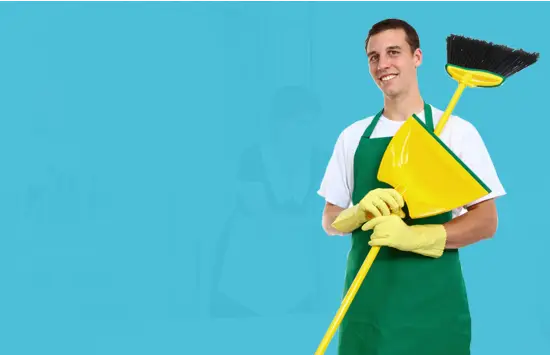
Professional Cleaning Services in Gold Coast
book now
Recent Posts
-
![Comprehensive Guide to Bond Cleaning with Ozclean]()
A Comprehensive Guide to Bond Cleaning with Ozclean
January 18, 2024
Admin
-
![blog-thumbnail]()
-
![blog-thumbnail]()
The Complete Guide to Dog Hair Removal from Office Carpets
December 28, 2023
Admin
-
![blog-thumbnail]()
Winter Cleaning Tips For Outdoor Spaces
August 03, 2023
Admin
-
![blog-thumbnail]()
Robotic Vacuums: Advantages And Disadvantages
April 14, 2023
Admin
-
![blog thumbnail]()
Tips For Cleaning Your Kitchen Efficiently And Effectively
March 30, 2023
Admin
-
![blog-thumbnail]()
Room-by-Room Cleaning Checklists for an Efficient Clean
March 08, 2023
Admin
-
![blog-thumbnail]()
Effective Ways To Remove Rust Stains From Bathtub
January 31, 2022
Admin
-
![blog-thumbnail]()
5 Effective Carpet Cleaning Hacks
January 10, 2022
Admin
-
![blog-thumbnail]()
5 Cleaning Tips For Pregnant Ladies
December 27, 2022
Admin
-
![blog-thumbnail]()
6 Tips To Choose The Ideal Vacuum Cleaner For Your Car
December 13, 2022
Admin
-
![blog-thumbnail]()
5 Benefits When You Chose Professional Roof Cleaning
May 03, 2022
Admin

